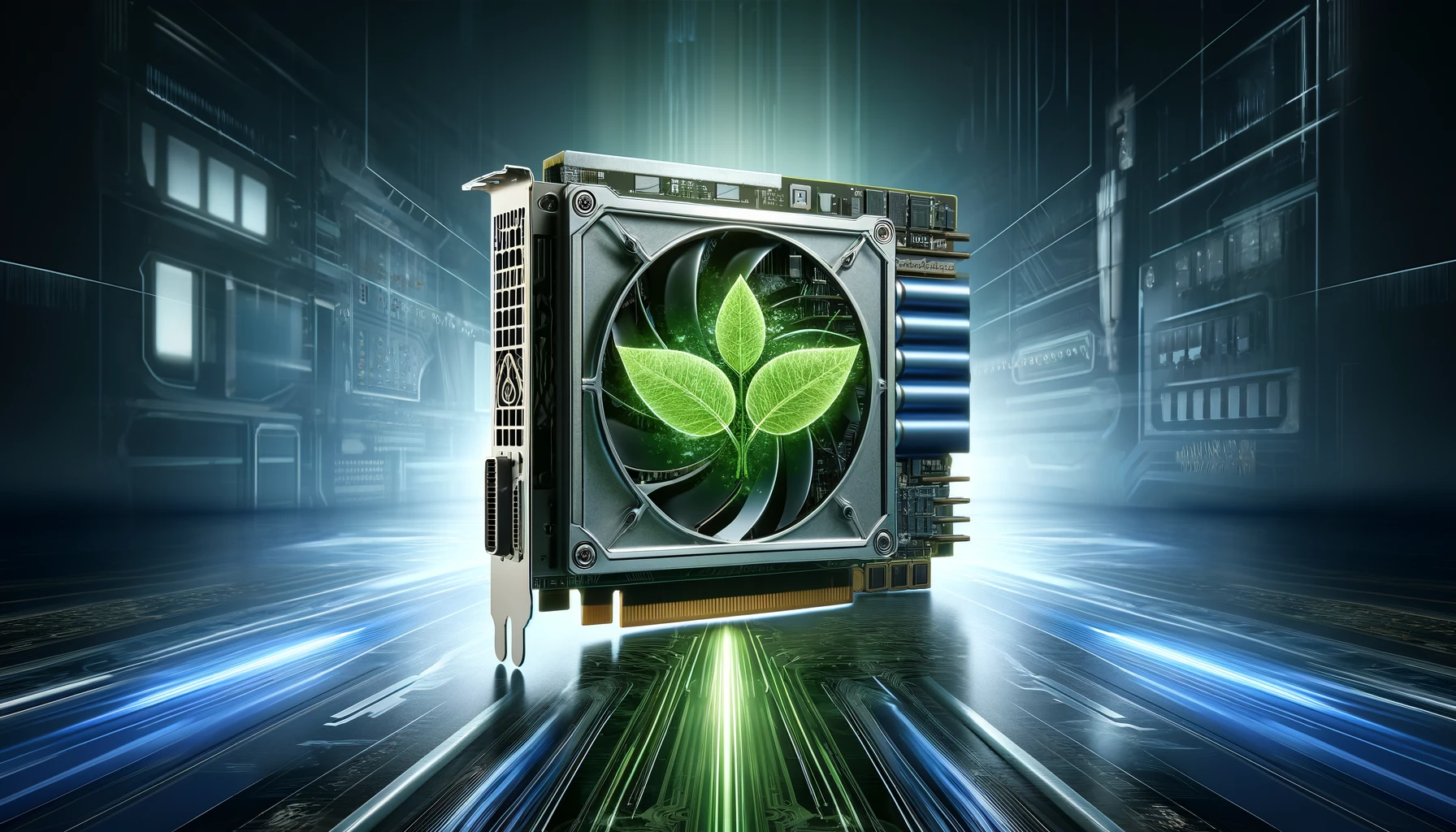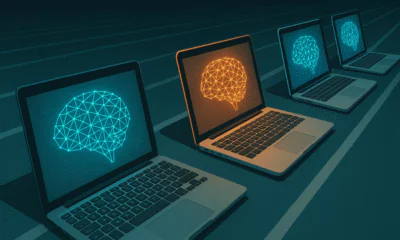Thought Leaders
How to Not Boil the Oceans with AI

As we navigate the frontier of artificial intelligence, I find myself constantly reflecting on the dual nature of the technology we're pioneering. AI, in its essence, is not just an assembly of algorithms and datasets; it's a manifestation of our collective ingenuity, aimed at solving some of the most intricate challenges facing humanity. Yet, as the co-founder and CEO of Lemurian Labs, I'm acutely aware of the responsibility that accompanies our race toward integrating AI into the very fabric of daily life. It compels us to ask: how do we harness AI's boundless potential without compromising the health of our planet?
Innovation with a Side of Global Warming
Technological innovation always comes at the expense of side effects that you don’t always account for. In the case of AI today, it requires more energy than other types of computing. The International Energy Agency reported recently that training a single model uses more electricity than 100 US homes consume in an entire year. All that energy comes at a price, not just for developers, but for our planet. Just last year, energy-related CO2 emissions reached an all-time high of 37.4 billion tonnes. AI isn’t slowing down, so we have to ask ourselves – is the energy required to power AI and the resulting implications on our planet worth it? Is AI more important than being able to breathe our own air? I hope we never get to a point where that becomes a reality, but if nothing changes it’s not too far off.
I’m not alone in my call for more energy efficiency across AI. At the recent Bosch Connected World Conference, Elon Musk noted that with AI we’re “on the edge of probably the biggest technology revolution that has ever existed,” but expressed that we could begin seeing electricity shortages as early as next year. AI’s power consumption isn’t just a tech problem, it’s a global problem.
Envisioning AI as an Complex System
To solve these inefficiencies we need to look at AI as a complex system with many interconnected and moving parts rather than a standalone technology. This system encompasses everything from the algorithms we write, to the libraries, compilers, runtimes, drivers, hardware we depend on, and the energy required to power all this. By adopting this holistic view, we can identify and address inefficiencies at every level of AI development, paving the way for solutions that are not only technologically advanced but also environmentally responsible. Understanding AI as a network of interconnected systems and processes illuminates the path to innovative solutions that are as efficient as they are effective.
A Universal Software Stack for AI
The current development process of AI is highly fragmented, with each hardware type requiring a specific software stack that only runs on that one device, and many specialized tools and libraries optimized for different problems, the majority of which are largely incompatible. Developers already struggle with programming system-on-chips (SoCs) such as those in edge devices like mobile phones, but soon everything that happened in mobile will happen in the datacenter, and be a hundred times more complicated. Developers will have to stitch together and work their way through an intricate system of many different programming models, libraries to get performance out of their increasingly heterogeneous clusters, much more than they already have to. And that is just going to be for training. For instance, programming and getting performance out of a supercomputer with thousands to tens of thousands of CPUs and GPUs is very time-consuming and requires very specialized knowledge, and even then a lot is left on the table because the current programming model doesn’t scale to this level, resulting in excess energy expenditure, which will only get worse as we continue to scale models.
Addressing this requires a sort of universal software stack that can address the fragmentation and make it simpler to program and get performance out of increasingly heterogeneous hardware from existing vendors, while also making it easier to get productive on new hardware from new entrants. This would also serve to accelerate innovation in AI and in computer architectures, and increase adoption for AI in a plethora more industries and applications.
The Demand for Efficient Hardware
In addition to implementing a universal software stack, it is crucial to consider optimizing the underlying hardware for greater performance and efficiency. Graphics Processing Units (GPUs), originally designed for gaming, despite being immensely powerful and useful, have a lot of sources of inefficiency which become more apparent as we scale them to supercomputer levels in the datacenter. The current indefinite scaling of GPUs leads to amplified development costs, shortages in hardware availability, and a significant increase in CO2 emissions.
Not only are these challenges a massive barrier to entry, but their impact is being felt across the entire industry at large. Because let’s face it – if the world’s largest tech companies are having trouble obtaining enough GPUs and getting enough energy to power their datacenters, there’s no hope for the rest of us.
A Pivotal Pivot
At Lemurian Labs, we faced this firsthand. Back in 2018, we were a small AI startup trying to build a foundational model but the sheer cost was unjustifiable. The amount of computing power required alone was enough to drive development costs to a level that was unattainable not just to us as a small startup, but to anyone outside of the world’s largest tech companies. This inspired us to pivot from developing AI to solving the underlying challenges that made it inaccessible.
We started at the basics developing an entirely new foundational arithmetic to power AI. Called PAL (parallel adaptive logarithm), this innovative number system empowered us to create a processor capable of achieving up to 20 times greater throughput than traditional GPUs on benchmark AI workloads, all while consuming half the power.
Our unwavering commitment to making the lives of AI developers easier while making AI more efficient and accessible has led us to always trying to peel the onion and get a deeper understanding of the problem. From designing ultra-high performance and efficient computer architectures designed to scale from the edge to the datacenter, to creating software stacks that address the challenges of programming single heterogeneous devices to warehouse scale computers. All this serves to enable faster AI deployments at a reduced cost, boosting developer productivity, expediting workloads, and simultaneously enhancing accessibility, fostering innovation, adoption, and equity.
Achieving AI for All
In order for AI to have a meaningful impact on our world, we need to ensure that we don’t destroy it in the process and that requires fundamentally changing the way it’s developed. The costs and compute required today tip the scale in favor of a large few, creating a massive barrier to innovation and accessibility while dumping massive amounts of CO2 into our atmosphere. By thinking of AI development from the point of view of developers and the planet we can begin to address these underlying inefficiencies to achieve a future of AI that’s accessible to all and environmentally responsible.
A Personal Reflection and Call to Action for Sustainable AI
Looking ahead, my feelings about the future of AI are a mix of optimism and caution. I'm optimistic about AI's transformative potential to better our world, yet cautious about the significant responsibility it entails. I envision a future where AI's direction is determined not solely by our technological advancements but by a steadfast adherence to sustainability, equity, and inclusivity. Leading Lemurian Labs, I'm driven by a vision of AI as a pivotal force for positive change, prioritizing both humanity's upliftment and environmental preservation. This mission goes beyond creating superior technology; it's about pioneering innovations that are beneficial, ethically sound, and underscore the importance of thoughtful, scalable solutions that honor our collective aspirations and planetary health.
As we stand on the brink of a new era in AI development, our call to action is unequivocal: we must foster AI in a manner that conscientiously considers our environmental impact and champions the common good. This ethos is the cornerstone of our work at Lemurian Labs, inspiring us to innovate, collaborate, and set a precedent. “Let's not just build AI for innovation's sake but innovate for humanity and our planet,” I urge, inviting the global community to join in reshaping AI's landscape. Together, we can guarantee AI emerges as a beacon of positive transformation, empowering humanity and safeguarding our planet for future generations.












